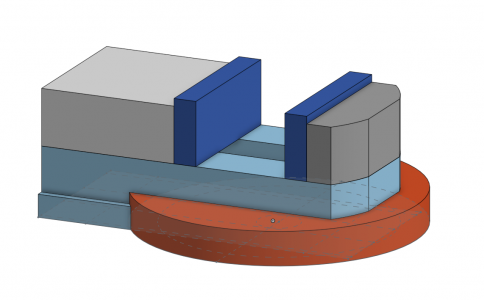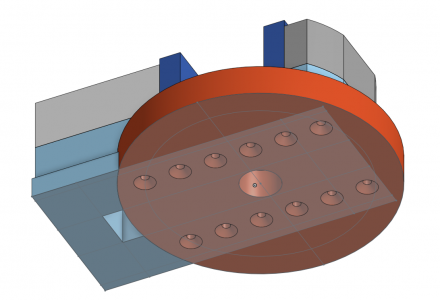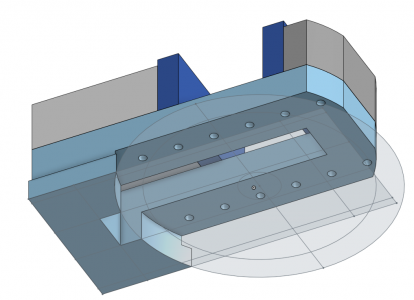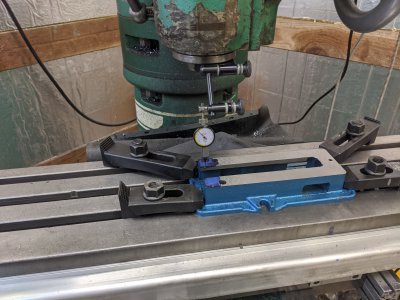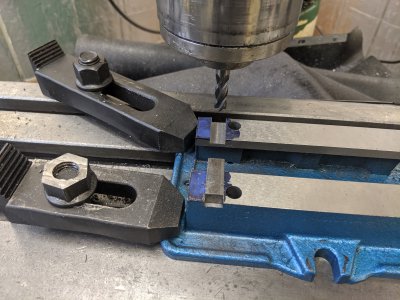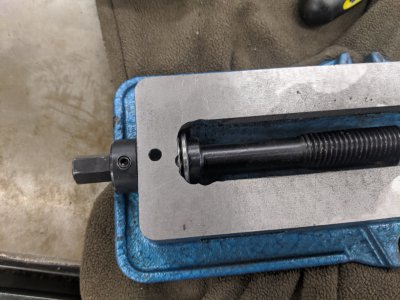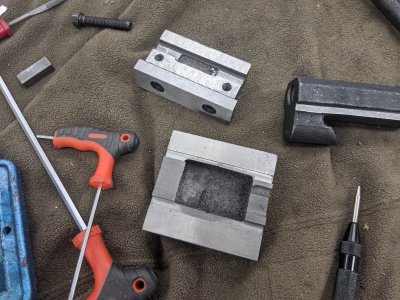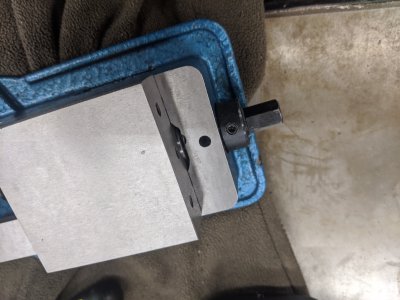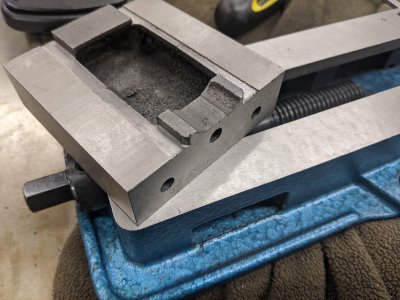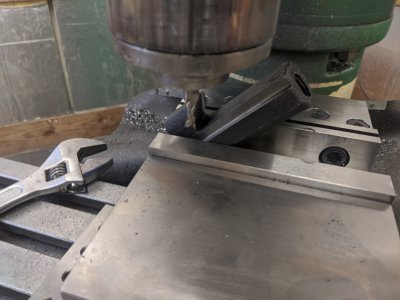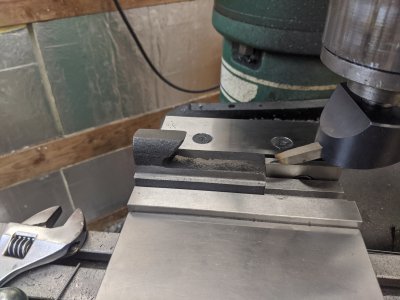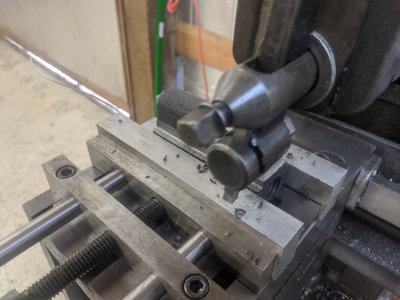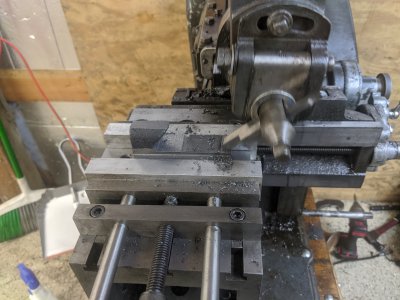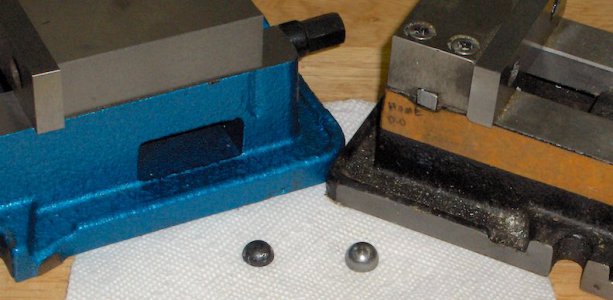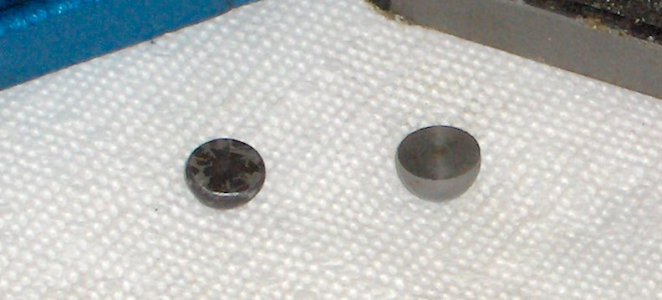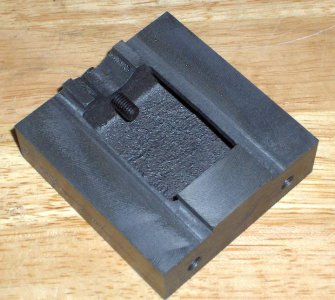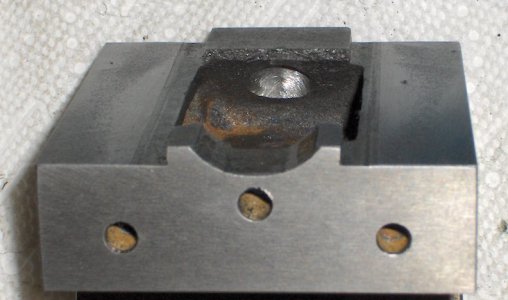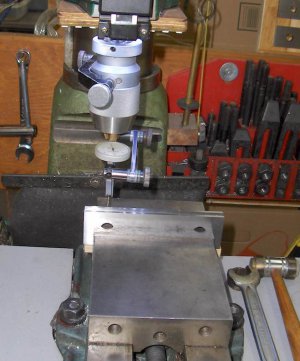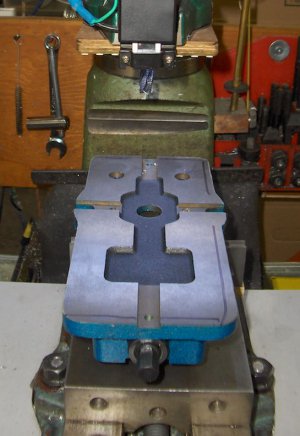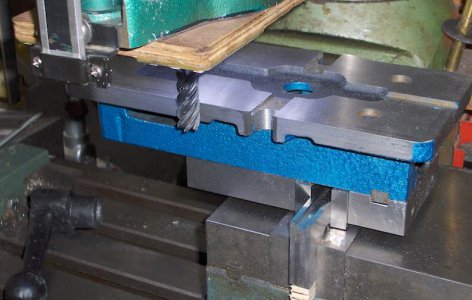- Joined
- Aug 3, 2017
- Messages
- 2,437
Day 3, a little more grinding!
I only had a little more than an hour today, but I did some grinding milling and grinding.
I ground started by fly cutting, but I ended up having to switch to a carbide face mill since the speed was too much for the bolt I used to hold down the center:
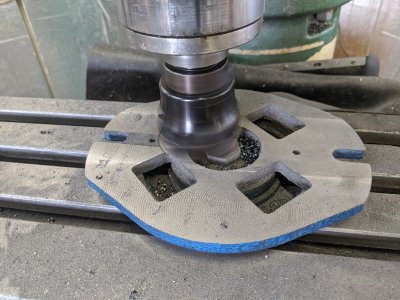
I then straightened it more or less to the T slots and milled the mounting holes inward about 1/4" on each side to make it fit my table.
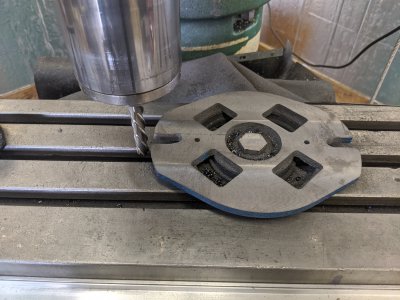
I cleaned up an area for the bolt as well. I ended up grinding a thick washer down a bit flat on one side to mount.
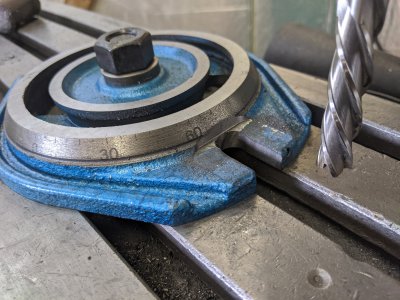
I popped the pivot back in and remounted!
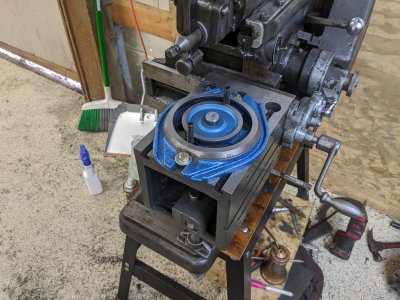
I ground the base and reground the bottom of the body of the vise while I was at it. The base itself is down to .853, so I saved more than .300!
The body went down another 2-3 thou as I wanted to clean up the grind and it came out much better!
Next I want to mill the keyway in the body, which should be its last Op on that part.
I'm hoping I can get another 3-400 thou out of the vise jaws as well to minimize the height.
I only had a little more than an hour today, but I did some grinding milling and grinding.
I ground started by fly cutting, but I ended up having to switch to a carbide face mill since the speed was too much for the bolt I used to hold down the center:

I then straightened it more or less to the T slots and milled the mounting holes inward about 1/4" on each side to make it fit my table.

I cleaned up an area for the bolt as well. I ended up grinding a thick washer down a bit flat on one side to mount.

I popped the pivot back in and remounted!

I ground the base and reground the bottom of the body of the vise while I was at it. The base itself is down to .853, so I saved more than .300!
The body went down another 2-3 thou as I wanted to clean up the grind and it came out much better!
Next I want to mill the keyway in the body, which should be its last Op on that part.
I'm hoping I can get another 3-400 thou out of the vise jaws as well to minimize the height.


